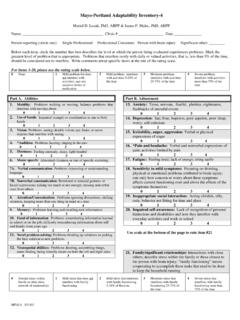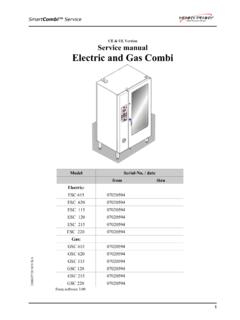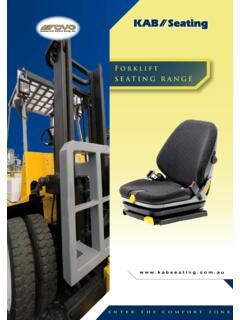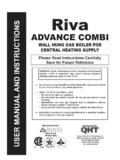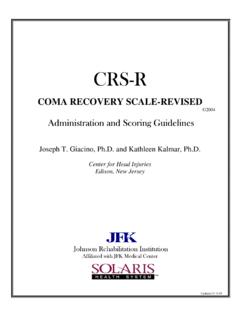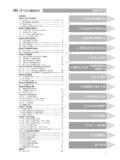Transcription of DISABILITY RATING SCALE - tbims.org
1 TBI NATIONAL DATABASE COLLECTION FORM Patient Name: Date of RATING : _____ Name of Person Completing Form: _____ DISABILITY RATING SCALE : DISABILITY RATING SCALE ratings to be completed within 72 hours after Rehab. Admission. And within 72 hours before Rehab. Discharge. A. EYE OPENING: (0) Spontaneous 0-SPONTANEOUS: eyes open with sleep/wake rhythms indicating active arousal mechanisms, does not assume awareness. 1-TO SPEECH AND/OR SENSORY STIMULATION: a response to any verbal approach, whether spoken or shouted, not necessarily the command to open the eyes.
2 Also, response to touch, mild pressure. 2-TO PAIN: tested by a painful stimulus. 3-NONE: no eye opening even to painful stimulation. (1) To Speech (2) To Pain (3) None B. COMMUNICATION ABILITY: (0) Oriented 0-ORIENTED: implies awareness of self and the environment. Patient able to tell you a) who he is; b) where he is; c) why he is there; d) year; e) season; f) month; g) day; h) time of day. 1-CONFUSED: attention can be held and patient responds to questions but responses are delayed and/or indicate varying degrees of disorientation and confusion. 2-INAPPROPRIATE: intelligible articulation but speech is used only in an exclamatory or random way (such as shouting and swearing); no sustained communication exchange is possible. 3-INCOMPREHENSIBLE: moaning, groaning or sounds without recognizable words, no consistent communication signs.
3 4-NONE: no sounds or communications signs from patient. (1) Confused (2) Inappropriate (3) Incomprehensible (4) None C. MOTOR RESPONSE: 0-OBEYING: obeying command to move finger on best side. If no response or not suitable try another command such as move lips, blink eyes, etc. Do not include grasp or other reflex responses. 1-LOCALIZING: a painful stimulus at more than one site causes limb to move (even slightly) in an attempt to remove it. It is a deliberate motor act to move away from or remove the source of noxious stimulation. If there is doubt as to whether withdrawal or localization has occurred after 3 or 4 painful stimulations, rate as localization. 2-WITHDRAWING: any generalized movement away from a noxious stimulus that is more than a simple reflex response 3-FLEXING: painful stimulation results in either flexion at the elbow, rapid withdrawal with abduction of the shoulder or a slow withdrawal with adduction of the shoulder.
4 If there is confusion between flexing and withdrawing, then use pinprick on hands. 4-EXTENDING: painful stimulation results in extension of the limb. 5-NONE: no response can be elicited. Usually associated with hypotonia. Exclude spinal transection as an explanation of lack of response; be satisfied that an adequate stimulus has been applied. (0) Obeying (1) Localizing (2) Withdrawing (3) Flexing (4) Extending (5) None (COGNITIVE ABILITY ONLY) ( ) Complete ( ) Partial ( ) Minimal ( )
5 None Does the patient show awareness of how and when to perform this activity? Ignore motor disabilities that interfere with carrying out this function. (This is rated under Level of Functioning described below.) 0-COMPLETE: continuously shows awareness that he knows how to feed and can convey unambiguous information that he knows when this activity should occur. 1-PARTIAL: intermittently shows awareness that he knows how to feed and/or can intermittently convey reasonably clearly information that he knows when the activity should occur. 2-MINIMAL: shows questionable or infrequent awareness that he knows in a primitive way how to feed and/or shows infrequently by certain signs, sounds, or activities that he is vaguely aware when the activity should occur.
6 3-NONE: shows virtually no awareness at any time that he knows how to feed and cannot convey information by signs, sounds, or activity that he knows when the activity should occur. (COGNITIVE ABILITY ONLY) Does the patient show awareness of how and when to perform this activity? Ignore motor disabilities that interfere with carrying out this function. (This is rated under Level of Functioning described below.) Rate best response for toileting based on bowel and bladder behavior 0-COMPLETE: continuously shows awareness that he knows how to toilet and can convey unambiguous information that he knows when this activity should occur. 1-PARTIAL: intermittently shows awareness that he knows how to toilet and/or can intermittently convey reasonably clearly information that he knows when the activity should occur.
7 2-MINIMAL: shows questionable or infrequent awareness that he knows in a primitive way how to toilet and/or shows infrequently by certain signs, sounds, or activities that he is vaguely aware when the activity should occur. 3-NONE: shows virtually no awareness at any time that he knows how to toilet and cannot convey information by signs, sounds, or activity that he knows when the activity should occur. ( ) Complete ( ) Partial ( ) Minimal ( ) None (COGNITIVE ABILITY ONLY) Does the patient show awareness of how and when to perform this activity? Ignore motor disabilities that interfere with carrying out this function. (This is rated under Level of Functioning described below.) Grooming refers to bathing, washing, brushing of teeth, shaving, combing or brushing of hair and dressing.
8 0-COMPLETE: continuously shows awareness that he knows how to groom self and can convey unambiguous information that he knows when this activity should occur. 1-PARTIAL: intermittently shows awareness that he knows how to groom self and/or can intermittently convey reasonably clearly information that he knows when the activity should occur. 2-MINIMAL: shows questionable or infrequent awareness that he knows in a primitive way how to groom self and/or shows infrequently by certain signs, sounds, or activities that he is vaguely aware when the activity should occur. 3-NONE: shows virtually no awareness at any time that he knows how to groom self and cannot convey information by signs, sounds, or activity that he knows when the activity should occur.
9 ( ) Complete ( ) Partial ( ) Minimal ( ) None OF FUNCTIONING (PHYSICAL, MENTAL, EMOTIONAL OR SOCIAL FUNCTION)) 0-COMPLETELY INDEPENDENT: able to live as he wishes, requiring no restriction due to physical, mental, emotional or social problems. 1-INDEPENDENT IN SPECIAL ENVIRONMENT: capable of functioning independently when needed requirements are met (mechanical aids) 2-MILDLY DEPENDENT: able to care for most of own needs but requires limited assistance due to physical, cognitive and/or emotional problems ( , needs non-resident helper). 3-MODERATELY DEPENDENT: able to care for self partially but needs another person at all times. (person in home) 4-MARKEDLY DEPENDENT: needs help with all major activities and the assistance of another person at all times.
10 5-TOTALLY DEPENDENT: not able to assist in own care and requires 24-hour nursing care. ( ) Completely Independent ( ) Independent in special environment ( ) Mildly Dependent-Limited assistance (non-resid - helper) ( ) Moderately Dependent-moderate assist (person in home) ( ) markedly Dependent-assist all major activities, all times ( ) Totally Dependent-24 hour nursing care. H."EMPLOYABILITY"(AS A FULL TIME WORKER, HOMEMAKER, OR STUDENT) 0-NOT RESTRICTED: can compete in the open market for a relatively wide range of jobs commensurate with existing skills; or can initiate, plan execute and assume responsibilities associated with homemaking; or can understand and carry out most age relevant school assignments. 1-SELECTED JOBS, COMPETITIVE: can compete in a limited job market for a relatively narrow range of jobs because of limitations of the type described above and/or because of some physical limitations; or can initiate, plan, execute and assume many but not all responsibilities associated with homemaking; or can understand and carry out many but not all school assignments.



